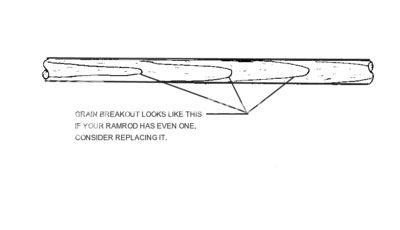Black Jaque Janaviac
40 Cal.
- Joined
- Sep 2, 2009
- Messages
- 535
- Reaction score
- 73
I suppose, there probably ain't much risk in trying it without consulting you folks but. . .
As I look back it has been a long time since I ever needed to pull anything from a barrel while in the hunting field. Whenever I clean I am usually at camp or home where I have access to threaded metal rods. If I dryball, I just work a little powder into the vent.
So I broke another ramrod. I am thinking of sayin' heck with the little brass end and just cutting a plain dowel to size.
It seems too simple. I wonder why I haven't heard of other folks doing this.
As I look back it has been a long time since I ever needed to pull anything from a barrel while in the hunting field. Whenever I clean I am usually at camp or home where I have access to threaded metal rods. If I dryball, I just work a little powder into the vent.
So I broke another ramrod. I am thinking of sayin' heck with the little brass end and just cutting a plain dowel to size.
It seems too simple. I wonder why I haven't heard of other folks doing this.






